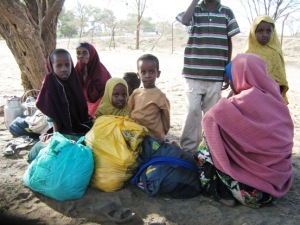Volume 1, Issue 4-5 / March-April 2009
Plans to relocate 50,000 Somali refugees from Dadaab Camp to Kakuma Camp have changed as the government agrees to establish a new camp in Northeastern Province.

Last month, UNHCR announced plans to relocate 50,000 Somali refugees from Dadaab Camp in northeastern Kenya to Kakuma Camp. 10,000 new arrivals were slated to arrive in Kakuma this month. But the expected newcomers have not yet alighted in Kakuma, and refugees are wondering why.
According to the Kakuma Camp Manager, Mr. William Lenaremo, an agreement was reached between the Government of Kenya, the host community living in Northeastern Province, and UNHCR regarding land to be allocated for refugee settlement in another district of Northeastern Province. Rather than relocating 50,000 Somali refugees to Kakuma, many of them will be settled in this new camp.
According to Mr. Lenaremo, funding was a major factor in the decision. “There was not enough funding to relocate those refugees,” he says. “It would cost a lot to transport them to Kakuma as the distance is so far.”
But a number of refugees will still be relocated to Kakuma Camp. Mr. Lenaremo says that 10,000-15,000 Somali refugees are expected to be relocated to Kakuma, but the timeframe remains uncertain.
Refugee leaders from the Somali community say they have not been updated on the relocation process and it is unclear whether preparations are still underway. “It is not clear to me if the Somalis will still be relocated or not,” states the Somali Overall Chairman.
Despite the lack of information, many refugees have observed activities on the ground and drawn their own conclusions. Observing that agencies have not undertaken the usual preparations for new arrivals at the reception centre in Kakuma Three, refugees concluded that the relocation exercise was scrapped. The operation has ceased to be “the talk of the day” as it was a month ago.
The planned relocation exercise was intended to reduce over-congestion in Dadaab Refugee Camp, where settlements are currently operating at triple their intended capacity.
